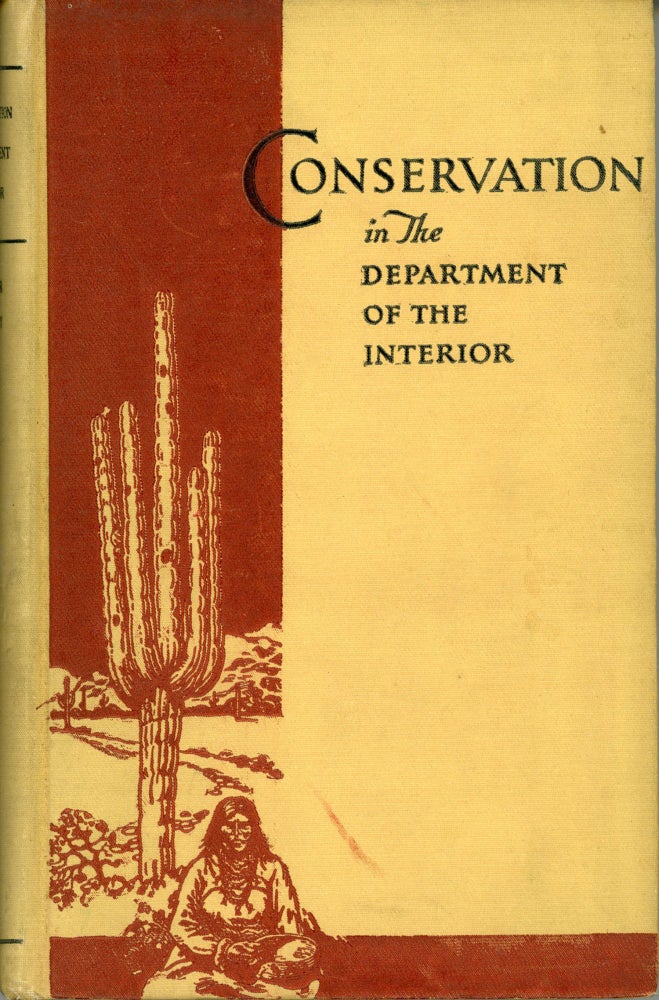CONSERVATION IN THE DEPARTMENT OF THE INTERIOR. By Ray Lyman Wilbur Secretary and William Atherton Du Puy Executive Assistant. Washington: United States Government Printing Office, 1931. 23x14.5 cm, pp. [i-ii: blank] [iii-vi] vii [vii] ix-xii 1-252 [253] [254-260: blank], illustrations, original pictorial tan cloth, stamped in brown and black. First edition. A major Depression era report which focuses upon Dr. Wilbur's interests in the welfare of Native Americans, the health of children, and proper management of America's energy resources (oil and natural gas conservation [post Teapot Dome scandal], the Hoover Dam project, etc.). Ray Lyman Wilbur (1875-1949) was an American medical doctor who served as the third president of Stanford University and was the thirty-first United States Secretary of the Interior. He served as Secretary of the Interior from March 1929 until March 1933 in the Hoover administration. After leaving the Department of the Interior in 1933, Wilbur was a critic of Franklin D. Roosevelt's New Deal and a champion of "rugged individualism." Among the reports are "Shackling the Colorado," an account of the Hoover Dam project, pp. 16-30, and "National Parks," where the Department of the Interior has "made satisfactory progress toward the conservation of such areas for the generations that are to come," pp. 96-111. An important association copy with signed inscription from Wilbur to political scientist Everett Somerville Brown on the front paste-down: "To Everett S. Brown / from Ray Lyman Wilbur / Dec. 1931." A former lecturer in history at Stanford University (1921), Dr. Brown served on the University of Michigan faculty from 1921 until his retirement in 1956. "From 1917 to 1918, Dr. Brown was a member of the United States Food Administration in Washington. He also was an assistant to Herbert Hoover from 1918 to 1920 in the American Relief Administration as well as director of the agency's information service" (New York Times, 22 December 1964). Wilbur and Hoover (and perhaps Brown) were lifelong friends. A Stanford dormitory is named for Wilbur -- revisionists say he supported eugenics and therefore was a racist -- so this is of concern to some, despite his otherwise dedicated service in education, medicine and public health. Tiny "M:U duplicate" stamp on the front free endpaper. Cloth a bit dusty, spine lean, else a very good copy. (#166871).
Price: $150.00
No statement of printing.


